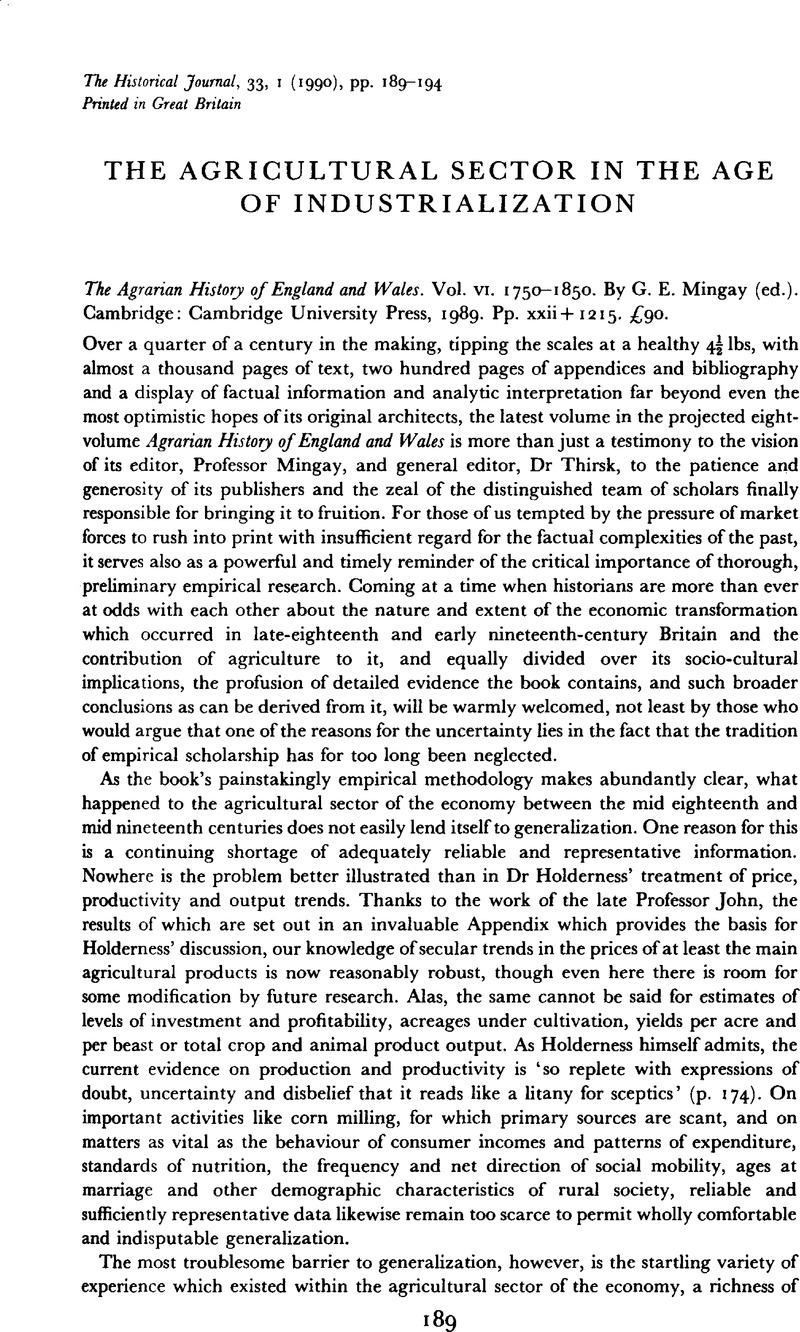Published online by Cambridge University Press: 11 February 2009

1 For a summary of previous methods of estimating agricultural output see Crafts, N. F. R., British economic growth during the Industrial Revolution (Oxford, 1985), pp. 38–42Google Scholar.
2 See Jackson, R. V., ‘Growth and deceleration in English agriculture, 1660–1780’, Economic History Review, XXXVIII, 3 (1985), 333–51Google Scholar. Crafts, , British economic growth, pp. 42–4Google Scholar. And compare with Deane, P. and Cole, W. A., British economic growth, 1688–1959 (Cambridge, 1967 edn), pp. 65–78Google Scholar.
3 O'Brien, P. K., ‘Agriculture and the Industrial Revolution’, Economic History Review, XXX, 1 (1977), 167–70Google Scholar.
4 On secular trends in rates of agricultural productivity contrast Crafts1, , British economic growth, pp. 84, 115Google Scholar, with Hueckel, G., ‘Agriculture during industrialization’, in Floud, R. and McCloskey, D. (eds.), The economic history of Britain since 1700. Volume 1. 1700–1860 (Cambridge, 1981), pp. 191–2Google Scholar. Williamson, J. G., ‘Debating the British Industrial Revolution’, Explorations in Economic History, XXIV (1987), 274–6Google Scholar. McCloskey, D., ‘The Industrial Revolution 1780–1860: a survey’, in Floud, and McCloskey, , The economic history of Britain, p. 114Google Scholar. For a reminder of the fragility of such calculations see Mokyr, J., ‘Has the Industrial Revolution been crowded out? Some reflections on Crafts and Williamson’, Explorations in Economic History, XXIV (1987), 305–12Google Scholar.
5 See, for example, McCloskey, , ‘The Industrial Revolution 1780–1860’, pp. 103–17Google Scholar. Fores, M., ‘The myth of a British Industrial Revolution’, History, LXVI (1981), 181–98CrossRefGoogle Scholar. Harley, C. K., ‘British industrialization before 1841: evidence of slower growth during the Industrial Revolution’, Journal of Economic History, XLII, 2 (1982), 267–89CrossRefGoogle Scholar. Crafts, N. F. R., ‘British economic growth, 1700–1831: a review of the evidence’, Economic History Review, XXXVI, 2 (1983), 177–99CrossRefGoogle Scholar.
6 Sullivan, R. J., ‘The timing and pattern of technological development in English agriculture, 1611–1850’, Journal of Economic History, XLV, 2 (1985), 314Google Scholar.
7 Crafts, , ‘British economic growth’, pp. 137–40Google Scholar. O'Brien, , ‘Agriculture and the Industrial Revolution’, pp. 172–81Google Scholar. O'Brien, P. K., ‘Agriculture and the home market for English industry 1660–1820’, English Historical Review, c (1985), 773–800CrossRefGoogle Scholar.
8 Crafts, N. F. R., ‘Industrial Revolution in England and France: some thoughts on the question, why was England first?’, Economic History Review, XXX, 3 (1977), 429–41CrossRefGoogle Scholar.